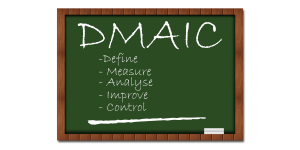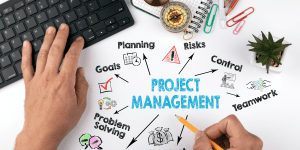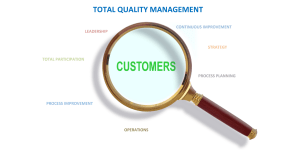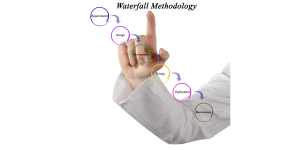Scrum methodology is a popular and effective framework used in project management. Scrum is an Agile methodology that helps teams to deliver high-quality products or services through collaboration, transparency, and flexibility. In this blog post, we will discuss Scrum methodology in projects, including the key concepts, roles, events, and artefacts.
Key Concepts of Scrum Methodology
- Sprint: A Sprint is a time-boxed period in which the team works on a set of backlog items to deliver a potentially releasable product increment. The Sprint typically lasts between one to four weeks.
- Product Backlog: The Product Backlog is a prioritized list of features, requirements, or enhancements that need to be completed for the product or service. The Product Backlog is constantly evolving and is managed by the Product Owner.
- Sprint Backlog: The Sprint Backlog is a list of items from the Product Backlog that the team plans to complete during the Sprint. The Sprint Backlog is owned by the Development Team and is updated daily during the Sprint.
- Increment: The Increment is the sum of all the completed Product Backlog items at the end of the Sprint. The Increment should be usable, and potentially releasable, providing added value to the customer.
Roles in Scrum Methodology
- Product Owner: The Product Owner is responsible for defining the Product Backlog, prioritizing the items, and ensuring that the team is working on the most important features. The Product Owner is the voice of the customer and works closely with the stakeholders to ensure that the product or service meets their needs.
- Development Team: The Development Team is responsible for delivering the potentially releasable Increment at the end of each Sprint. The Development Team is self-organizing and cross-functional, meaning that they have all the skills and expertise necessary to deliver the product or service.
- Scrum Master: The Scrum Master is responsible for ensuring that the team follows the Scrum framework and the Agile principles. The Scrum Master facilitates the Scrum events, coaches the team on Agile practices, and removes any obstacles or impediments that may affect the team’s productivity.
Events in Scrum Methodology
- Sprint Planning: The Sprint Planning is a collaborative meeting between the Product Owner, the Development Team, and the Scrum Master. The goal of the Sprint Planning is to define the Sprint Goal, select the items from the Product Backlog that the team will work on during the Sprint, and create the Sprint Backlog.
- Daily Scrum: The Daily Scrum is a 15-minute time-boxed meeting that takes place every day during the Sprint. The Development Team uses the Daily Scrum to synchronize their work and discuss any issues or impediments that may affect the Sprint Goal.
- Sprint Review: The Sprint Review is a collaborative meeting between the Development Team, the Product Owner, and the stakeholders. The Sprint Review is held at the end of the Sprint, and the team presents the Increment and receives feedback from the stakeholders.
- Sprint Retrospective: The Sprint Retrospective is a meeting that takes place at the end of the Sprint, where the team reflects on their performance and identifies areas for improvement. The goal of the Sprint Retrospective is to continuously improve the team’s processes and practices.
Artefacts in Scrum Methodology
- Product Backlog: The Product Backlog is a prioritized list of features, requirements, or enhancements that need to be completed for the product or service. The Product Backlog is constantly evolving and is managed by the Product Owner.
- Sprint Backlog: The Sprint Backlog is a list of items from the Product Backlog that the team plans to complete during the Sprint. The Sprint Backlog is owned by the Development Team and is updated
- Increment: The Increment is the sum of all the completed Product Backlog items at the end of the Sprint. The Increment should be usable, and potentially releasable, providing added value to the customer.
- Definition of Done: The Definition of Done is a shared understanding between the team, the Product Owner, and the stakeholders about what it means for an item in the Product Backlog to be completed. The Definition of Done is used to ensure that the Increment is usable and potentially releasable at the end of each Sprint.
Advantages of Scrum Methodology
- Flexibility: Scrum methodology is flexible and adaptable to changing requirements and priorities. The Scrum framework allows teams to respond quickly to changes in the market or customer needs, ensuring that the product or service meets their expectations.
- Transparency: Scrum methodology promotes transparency and collaboration among the team, the Product Owner, and the stakeholders. The Scrum events and artifacts provide visibility into the team’s progress and allow for feedback and continuous improvement.
- Empowerment: Scrum methodology empowers the team to be self-organizing and cross-functional. The team has the authority and responsibility to make decisions and deliver the product or service, resulting in higher motivation and job satisfaction.
- Customer Satisfaction: Scrum methodology focuses on delivering value to the customer through continuous improvement and collaboration. The Scrum events and artifacts ensure that the product or service meets the customer’s needs and expectations, resulting in higher customer satisfaction.
Challenges of Scrum Methodology
- Learning Curve: Scrum methodology requires a significant amount of learning and adaptation, especially for teams that are new to Agile practices. The Scrum framework and the Agile principles can be challenging to understand and implement, requiring coaching and support from experienced practitioners.
- Time-Boxing: Scrum methodology requires strict time-boxing of the events and the Sprint, which can be challenging for teams that are used to working in a more traditional project management environment. The time-boxing requires discipline and commitment from the team to ensure that the Sprint Goal is achieved.
- Role Clarity: Scrum methodology requires clear roles and responsibilities for the Product Owner, the Development Team, and the Scrum Master. Ensuring that each role is well-defined and understood can be challenging, especially in organizations that are used to a more hierarchical structure.
- Cultural Change: Scrum methodology requires a cultural change in the organization, promoting collaboration, transparency, and continuous improvement. Implementing Scrum methodology requires buy-in from the entire organization, including management, stakeholders, and team members.
Conclusion
Scrum methodology is a popular and effective framework used in project management to deliver high-quality products or services through collaboration, transparency, and flexibility. The Scrum framework includes key concepts, roles, events, and artifacts that promote transparency, empowerment, and customer satisfaction. Scrum methodology has several advantages, including flexibility, transparency, empowerment, and customer satisfaction. However, implementing Scrum methodology can also present challenges, such as a learning curve, time-boxing, role clarity, and cultural change. Overall, Scrum methodology is a valuable tool for teams looking to deliver value to the customer through collaboration, transparency, and continuous improvement.












